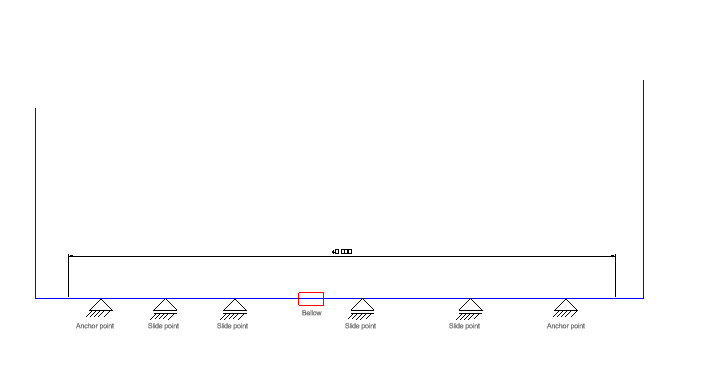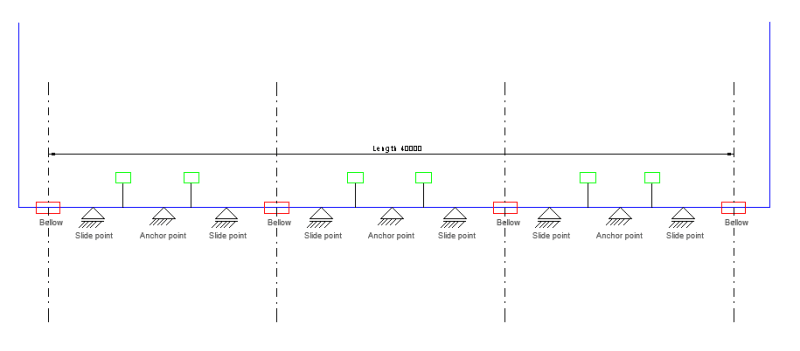Hi all,
could use some advice on anchor point topic.
From my understanding, when an expansion joint is installed in the piping system, it must be located between 2 anchor points ( we are talking about a straight line of CHW piping, 40 m long, the difference between installation and working temp around 25°C ).
Based on conditions in piping, both working and during testing, the calculation gives me that for DN150 there has to be an anchor point with 26000 N (testing done on 10 bar). I am going through different manufacturers of anchor points, however, just couldn't find any anchor point to take upon such load. What kind of anchoring do you usually use in such cases?
BR
could use some advice on anchor point topic.
From my understanding, when an expansion joint is installed in the piping system, it must be located between 2 anchor points ( we are talking about a straight line of CHW piping, 40 m long, the difference between installation and working temp around 25°C ).
Based on conditions in piping, both working and during testing, the calculation gives me that for DN150 there has to be an anchor point with 26000 N (testing done on 10 bar). I am going through different manufacturers of anchor points, however, just couldn't find any anchor point to take upon such load. What kind of anchoring do you usually use in such cases?
BR



